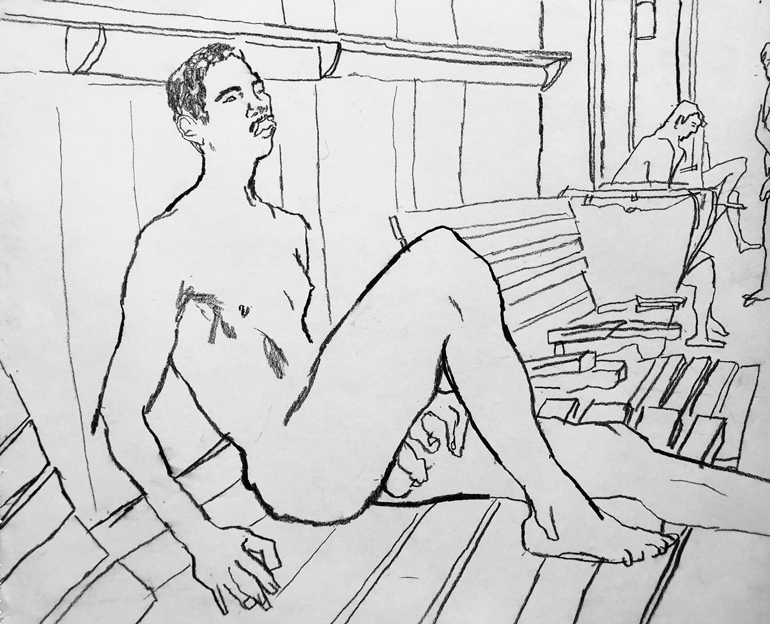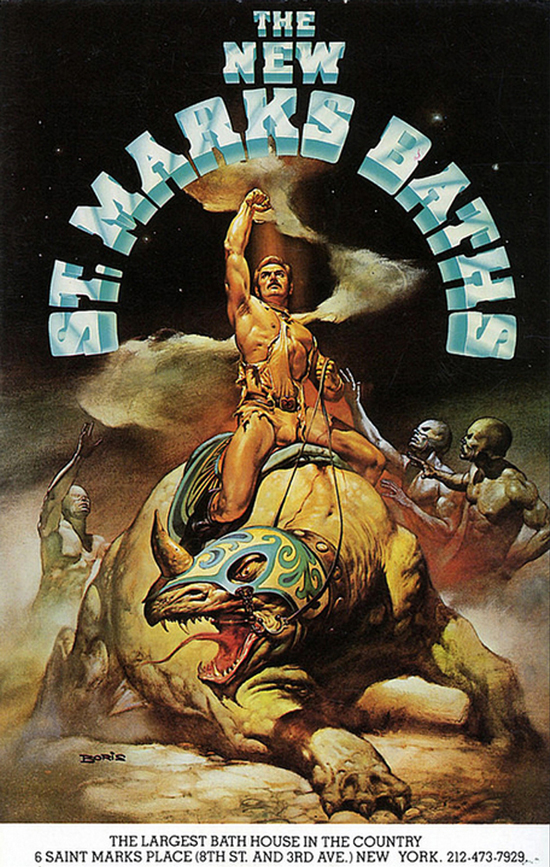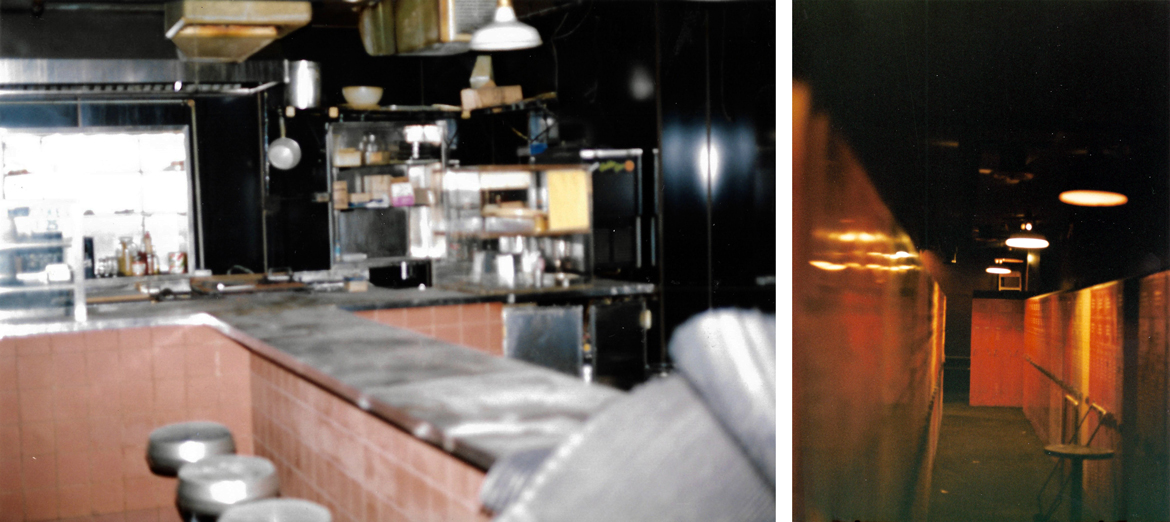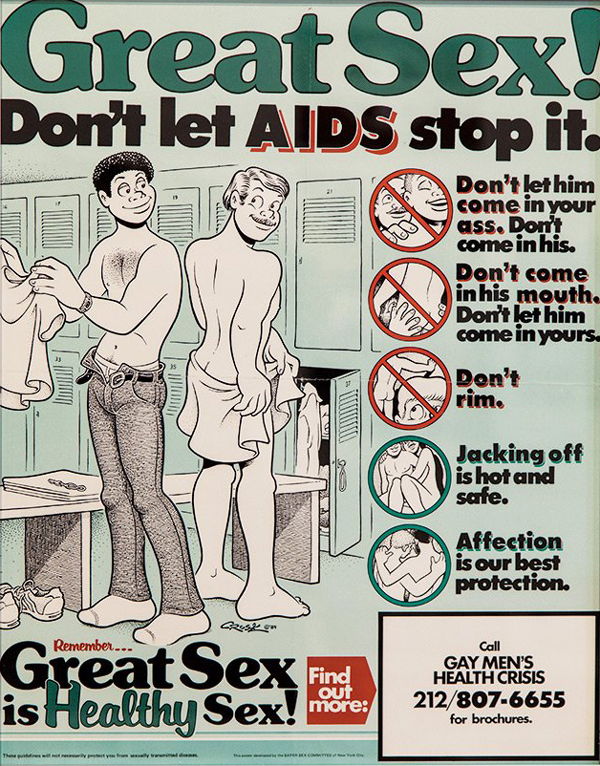
We are celebrating 15 years — and counting — of stories that are deeply researched and deeply felt, that build a historical record of what the city has been.
We are celebrating 15 years — and counting — of stories that are deeply researched and deeply felt, that build a historical record of what the city has been.
Pandemic life has scrambled spatial patterns of intimacy. Results have varied. Some have relished being forced into close quarters with significant others (or even roommates); for others, the stress of cloistering has become a major turn-off. Virtual platforms for dating and sex work have seen surges in activity, while the challenge of being a sexually-active single person during a public health crisis begs questions about the possibility of harm-reduction campaigns. Balancing the demands of social distance against the emotional toll of isolation, one thing becomes abundantly clear: the boundary between private and public space dissolves at the scale of a virus.
COVID-19 is not the first contagion to challenge that familiar distinction. During the 1980s, the HIV/AIDS epidemic (which would become a global pandemic in its own right) swept through New York City’s gay community and shifted the role of its key institutions. Long used for gay sex, bathhouses took on additional social functions as the tragic impacts of HIV/AIDS became more evident. While stigmatized by the wider public as a site of transmission, some evolved into an important node for the dissemination of information about safe sex practices. Below, Jackson Davidow revisits the history of the New St. Marks Baths, its role as an infrastructure of care before and during a time of crisis, and the questions that still loom around public health, private pleasure, and the spaces in-between.
In late March, the New York City Department of Health and Mental Hygiene published guidelines for safer sex in the midst of the COVID-19 pandemic. Though not a sexually transmitted infection (STI), COVID-19 can be spread through sex, and sex (or the lack thereof) has been a relentless cultural and social concern since the earliest days of quarantine. Updating and elaborating on its original message that “you are your safest sex partner,” the recommendations reflected an evolving epidemiological understanding that indoor spaces are key determinants of viral spread. The document advises staying home to minimize sexual contact with others, and to limit all close contact, sexual and otherwise, with those outside of the household. But the authors also realistically acknowledge that stringent domesticity does not work for everyone. In the case of sex with multiple people — not recommended — the guidelines suggest “larger, more open, and well-ventilated spaces.” Virtual spaces, such as Zoom parties, chat rooms, or subscription-based fan platforms, are highly encouraged for individuals who normally use digital applications to find sex partners or make a living. “Make it a little kinky,” the document even counsels: “Be creative with sexual positions and physical barriers, like walls, that allow sexual contact while preventing close face to face contact.” The public health officials who wrote this document recognize that spaces mold not only our sexual practices, but also our techniques of safer sex. The guidelines also reveal a firm understanding that the spatial dimensions of sex contribute to the overall wellness of the populace. In other words, what happens in intimate spaces has a bearing on larger ecosystems of health and disease.
The intrinsic linkage between public health and architecture has become ever more apparent in the struggle against COVID-19. Sex is where our anxieties and desires are most forcefully articulated, our vulnerabilities most frightfully exposed. Like the many other activities impacted and reconfigured by the pandemic, sex is structured by histories of power, disparity, and representation vis-à-vis race, gender, sexuality, class, ability, and so on. As the unevenly distributed impacts of this pandemic wear on, such nuances are necessary to bear in mind when considering the urgent projects of choreographing bodies, redesigning intimacy, and reducing harm across communities.
Lurking behind the Department of Health and Mental Hygiene’s response to COVID-19 is the specter of the HIV/AIDS pandemic, particularly in its early years. The two diseases are radically different in terms of transmission, incubation period, and preventability, as well as the broader economic, social, and political ramifications of their spread. Yet similar inequalities have been reproduced; COVID-19 mainly hurts those who are already hurting. Just as the government’s response to this virus is entirely shaped by its historical and ongoing response to HIV/AIDS, so New York City’s rubric of safer sex under the current pandemic can be directly traced to frameworks introduced by gay community activists in the early 1980s. During this time, little was known about the mysterious disease that was causing the deaths of an alarming number of gay men, drug users, and poor people of color. These same marginalized patient groups and their communities led a major social movement that forcefully politicized care, health, and sex. Public discussions about AIDS frequently centered on not only sexual practices, but also their spaces, especially the gay bathhouse. The New St. Marks Baths, among the most legendary and beloved bathhouses in New York City, was one crucial establishment that fueled discourses and practices of safe sex. As COVID-19 pushes us to reconsider the relationship between disease, sex, and space, the history of this bathhouse is a reminder that communities themselves must play an active role in the redesign of their own sexual practices.
The New St. Marks Baths epitomized the sexual vibrancy of gay liberation in the years following the Stonewall uprising. Originally built in the East Village in 1913, the St. Marks Russian and Turkish Baths — like many other communal steam baths throughout the city — was geared toward local businessmen and immigrant Jewish populations. In contrast to public baths for the working classes in the same tenement-filled neighborhoods, Turkish and Russian bathhouses had more common space such that men were better able to congregate, socialize, and have sex with one another. Known for its grubbier facilities, the St. Marks Baths increasingly served a gay clientele. What distinguished an early gay bathhouse from a regular Turkish or Russian bath was often the presence of small, rentable cubicles that could be closed or locked if individuals wished to engage in sexual activity. Early gay bathhouses also usually comprised lockers, bathrooms, showers, and a steam room or sauna. Darkness flooded the space, creating a sensual atmosphere for anonymous or partially anonymous sex.[1]
In 1977, gay entrepreneur Bruce Mailman purchased the establishment, remodeled it, and reopened it two years later as the New St. Marks Baths. The five-story building’s exterior remained the same: nondescript, with windows boarded up by steel shutters. The interior, however, was significantly changed. After mounting a marble flight of stairs, clients encountered a brass-caged admissions desk (allegedly taken from an old bank) upon the landing, where they paid for lockers and rooms in eight-hour increments. At the top of the staircase, there was also a café: a transitional space with men in both street clothes and tightly wrapped little towels. Once buzzed in through a heavy security door, clients were able to access lockers to change clothes, and then navigate the labyrinth-like corridors of cubicles, where they could endlessly cruise, wandering up and down the hallways in search of sex and other forms of erotic contact: a smile, a wink, a grope. If a man had a private room (rudimentarily equipped with a raised platform bed, sheets, pillow, and wall hook), he would leave the door open to invite in passersby. Social codes signaled what clients wanted sexually; a man lying on his stomach wanted to “bottom,” while a man sitting up wished to “top.”[2]
After the renovation, there were fifty cubicles per floor from the second to the fourth story. Besides the cruising corridors, the first floor contained the orgy room with bunk beds, glory holes, and a darkened lounge for rest, as well as a brightly lit area with showers, bathrooms, sauna, steam room, pool, and California hot tub. Clients also had access to a roof deck for sunbathing. For the most part, men had sex in the orgy room, sauna, and private cubicles; the other areas were primarily for cruising and socialization. Busy with staff doing laundry, readying cubicles, and mopping floors, the New St. Marks Baths provided an orderly and sanitary environment that encouraged diverse yet structured sexual encounters. Institutional hygiene was sometimes mirrored by on-site sexual health initiatives, such as testing for gonorrhea and syphilis, as well as Hepatitis B vaccine programs.[3]
With the arrival in the early 1980s of what eventually became known as AIDS, the media, health authorities, and certain gay groups blamed bathhouses for intensifying the epidemic. Whereas some gay men wanted the government to regulate and close down the bathhouse, hoping to lower infection rates, others believed that the gay community should have the power to choose what was best for itself.[4] As death tallies rose and fear escalated, a series of debates in the gay press, mainstream media, and public health agencies ushered in complicated questions about the roles, responsibilities, and designs of the bathhouse.
Before the bathhouse was put under public scrutiny, small pockets of grassroots organizers were grappling with how to reduce the risk of viral transmission. In New York City, activists Michael Callen and Richard Berkowitz collaborated with Dr. Joseph Sonnabend to develop the notion of “safe sex,” which culminated in their pioneering 1983 guide How to Have Sex in an Epidemic: One Approach. Based on a fragmentary working knowledge of the disease, their booklet delineated transmission prevention measures for not only explicit sexual acts, but also venues. According to the authors, “having medically safe sex at the baths is definitely not practical, but this doesn’t mean it isn’t possible. The moment you step into a bathhouse, you are at risk for disease. But there is much you can do to minimize this risk by adopting what might be called a scientific approach to the bathhouse.”
Below, listen to excerpts from an interview with Richard Berkowitz, conducted by the author in November 2020, in which the activist and former sex worker recounts personal memories of New York City’s gay bathhouses, including the New St. Marks Baths, and reflects on debates surrounding safe sex in the city’s gay community during the late 1970s and 1980s.
“It was a refuge”
“Clean, high-tech, attractive, cared-for”
“Turn up the lights”
“You could go up on the roof”
“It socialized us”
Departing from traditional etiquette, this “scientific approach” necessitated talking with one’s sex partner(s) beforehand to decide on types of sexual conduct. The writers recommended starting with a shower, which permitted one “to observe a potential partner for rashes, drips, sores, sobriety, etc.” Above all, they accentuated the importance of talking about AIDS precautions and wearing condoms, declaring, “if all of these concerns turn him off, it’s probably best to move on.” Safe sex at the baths also meant limiting oneself to only a couple of sexual contacts, taking down their phone numbers, and being in touch with them in case any STIs were to manifest later on. As Callen and Berkowitz sum up, “the essence of having medically safe sex at the baths is staying in control of what you do while you are constantly being tempted into sexual abandon.” At first, their ideas were controversial. Some people thought the booklet inappropriately policed their sexual choices, turning pleasurable encounters into something more clinical. Others were enraged by the claim that having safe sex with individuals living with AIDS was at all viable.
In December 1984, gay activists founded the Coalition for Sexual Responsibility (CSR) to promote these practices at bathhouses and other commercial establishments where sex occurred, including bars with backrooms, bookstores, and movie theaters. Collaborating with business owners, the media, and AIDS support groups, the CSR conducted routine inspections and regulations, hoping to popularize safe sex and to avoid government intervention. What drove these efforts was an unwavering belief that bathhouses were valuable spaces of community and thus had tremendous potential for teaching, learning about, and practicing safe sex. It was not until 1985 that government bodies warmed up to safe sex as a public health policy. Although at first resistant to protocols of safe sex, disparate organizations such as the Gay Men’s Health Crisis (GMHC), the Centers for Disease Control, and New York Physicians for Human Rights eventually adopted similar guidelines and worked with the local bathhouses to implement them.
By 1985, things were looking bad: AIDS patients experienced housing and job discrimination, and their houses were firebombed; parents boycotted schools with HIV-positive children; and certain politicians and health officials called for patient quarantine. Traversing the mainstream media, politics, and public health, homophobia was at the heart of these cruel and apathetic responses to the epidemic. New York City had 6,700 people living with AIDS, with many more untested. No cure or treatment was on the horizon. At the bathhouse, Callen recommended “monitoring for structural, educational, and hygienic regulations,” which included educational posters and brochures as well as condoms. A stronger degree of illumination could also police unsafe behaviors. He believed the baths should rid themselves of such architectural features as slings, glory holes, and bathtubs. Nonetheless, as Lori Behrman, public information director of the GMHC, pointed out, “bathhouses themselves do not cause AIDS, behavior does. These activities would probably still take place if the bathhouses were closed. They would take place in locations we would not be able to get to, to educate the patrons.”[5]
Out of the ten bathhouses still in operation, the New St. Marks Baths seemed to be the most receptive to incorporating recommendations from government agencies and community groups. Nevertheless, Mailman’s once successful business venture turned sour. Beginning in 1982 the New St. Marks Baths faced a fifty-percent decline in attendance, and, on top of that, it was being hounded to close. San Francisco and Los Angeles had already forced the baths to shut down, and the same pressure was rising in New York City. In October 1985, the State of New York passed a law closing bathhouses, but local jurisdictions were in charge of carrying out this policy in conjunction with the Public Health Council.[6] To appease these criticisms and combat the spread of AIDS, Mailman had been distributing safe sex pamphlets, posting signs about responsible practices, eliminating orgy rooms, and giving out free condoms. Clients could not enter the facility without being bombarded by information regarding AIDS. After being pressured to sign a statement of consent to safe sex guidelines, each client received a condom in an envelope that bluntly said its contents “could save your life.”
Now there were even human monitors patrolling open areas such as the illuminated saunas and corridors in order to ensure safe behaviors. Coordinated jack-off nights replaced the amorphous orgies.[7] The swimming pools contained high levels of chlorine, and soaps and lubricants were obtainable in pump-top dispensers and in single packages. As far as Mailman was concerned, these attempts at safe sex had proved medically effective; though HIV had a lengthy incubation period, the rates of gonorrhea, for example, seemed to have decreased by eighty percent since 1980. He also claimed that his bathhouse donated more than $50,000 toward AIDS research, care, and education. Yet due to the public apprehensions about the disease combined with the rampant homophobia of the era, the City Department of Health ultimately elected to shut down the remaining bathhouses in early December 1985. As Mailman’s assistant Susan Tomkin powerfully recalled, “when they came to close the baths down, there was no lock on the door. The baths had never been shut since the day they opened.”[8]
The original building still stands, and the New St. Marks Baths likewise remains embedded in queer cultural memory, though gay cruising and sex have become increasingly private and domestic activities. While the gay bathhouse in its heyday is solely visible in flickering images and labyrinthine recollections, safe sex — now taught regularly at school, in community groups, and online — is, for the most part, central to the queer vernacular, even as notions of risk have sometimes changed with pharmaceutical developments such as pre-exposure prophylaxis (PrEP). From phone sex to online chat rooms to location-based apps such as Grindr, the spatial reconfigurations of queer sexuality since the bathhouse closures are inseparable from the ongoing HIV/AIDS pandemic. HIV/AIDS and safe sex initiatives have thoroughly transformed our sexual cultures, contributing to practices that condition, and are conditioned by, spaces — both physical and virtual.
In the age of COVID-19, sexual behaviors are far from the only metrics of safety, but the history of safe sex has energized much thinking on how to live responsibly. Dr. Demetre Daskalakis, the former New York City Deputy Commissioner for the Division of Disease Control who was recently appointed as the CDC’s Director of the Division of HIV/AIDS Prevention, has specifically credited How to Have Sex in an Epidemic: One Approach as the main inspiration for the COVID-19 safer sex guidelines. One fundamental part of this pamphlet — something that tends to be overlooked by the mainstream media today — is its very queer emphasis on care. “Maybe affection is our best protection,” Berkowitz and Callen poignantly proposed, continuing: “Hard questions for hard times. But whatever happened to our great gay imaginations?”
Their question is an invitation to rise to the challenge of rethinking sex, intimacy, and sustenance from a queer perspective. Indeed thinkers and practitioners are avidly discussing sex alongside other forms of togetherness, care, and need, from everyday friendships to mutual aid networks. With affection as our best protection, we must continue to think critically and creatively about sex, health, and space as vital questions of design.
George Chauncey, Gay New York: Gender, Urban Culture, and the Making of the Gay Male World, 1890-1940 (New York: Basic Books, 1994), 218; Ira Tattelman, “The Meaning at the Wall: Tracing the Gay Bathhouse,” in Queers in Space: Communities, Public Places, Sites of Resistance, ed. Gordon Brent Ingram, Anne-Marie Bouthillette, and Yolanda Retter (Seattle: Bay Press, 1997), 399; Allan Berubé, “The History of the Gay Bathhouse,” in Policing Public Sex: Queer Politics and the Future of AIDS Activism, ed. Dangerous Bedfellows (Boston: South End Press, 1996), 190; Martin Weinberg and Colin Williams, “Gay Baths and the Social Organization of Impersonal Sex,” Social Problems 23, no. 2 (1975): 127.
Ira Tattelman, “Speaking to the Gay Bathhouse: Communicating in Sexually Charged Spaces,” in Public Sex/Gay Space, ed. William Leap (New York: Columbia University Press, 1999), 76–78, 81; Weinberg and Williams, “Gay Baths and the Social Organization of Impersonal Sex,” 127.
Berubé, “The History of the Gay Bathhouse,” 202–3; Tattelman, “Speaking to the Gay Bathhouse: Communicating in Sexually Charged Spaces,” 85, 89; William J. Woods and Diane Binson, eds., Gay Bathhouses and Public Health Policy (New York: Harrington Park Press, 2003), 2–3.
Sarah Schulman, My American History: Lesbian and Gay Life during the Reagan/Bush Years (New York: Routledge, 1994), 11.
Callen and Lori Behrman, quoted in Schulman, 105 and 107.
Woods and Binson, Gay Bathhouses and Public Health Policy, 12.
Berubé, “The History of the Gay Bathouse,” 203.
Susan Tomkin, quoted in Patrick Moore, Beyond Shame: Reclaiming the Abandoned History of Radical Gay Sexuality (Boston: Beacon, 2005), 113.
The views expressed here are those of the authors only and do not reflect the position of The Architectural League of New York.







Comments